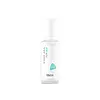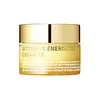What's inside
What's inside
 Key Ingredients
Key Ingredients

 Benefits
Benefits

 Concerns
Concerns

 Ingredients Side-by-side
Ingredients Side-by-side

Water
Skin ConditioningAlcohol Denat.
AntimicrobialGlycerin
HumectantCetyl Ethylhexanoate
EmollientCaprylic/Capric Triglyceride
MaskingSimmondsia Chinensis Seed Oil
EmollientBetaine
HumectantTrehalose
HumectantPentaerythrityl Tetraisostearate
EmollientSilica
AbrasiveXanthan Gum
EmulsifyingHedera Helix Extract
AntimicrobialCalendula Officinalis Flower Extract
MaskingRosmarinus Officinalis Extract
AntimicrobialMelaleuca Viridiflora Leaf Oil
Skin ConditioningChamomilla Recutita Flower/Leaf Extract
AntimicrobialCentella Asiatica Extract
CleansingLactobacillus/Soybean Ferment Extract
Skin ConditioningSalix Alba Bark Extract
AstringentCinnamomum Cassia Bark Extract
MaskingOriganum Vulgare Leaf Extract
Skin ConditioningChamaecyparis Obtusa Leaf Extract
Skin ConditioningScutellaria Baicalensis Root Extract
AstringentPortulaca Oleracea Extract
Skin ConditioningCitrus Paradisi Peel Oil
MaskingPaeonia Suffruticosa Root Extract
Skin ProtectingGlycyrrhiza Glabra Root Extract
BleachingAllantoin
Skin ConditioningPanthenol
Skin ConditioningCarbomer
Emulsion StabilisingArginine
MaskingWater, Alcohol Denat., Glycerin, Cetyl Ethylhexanoate, Caprylic/Capric Triglyceride, Simmondsia Chinensis Seed Oil, Betaine, Trehalose, Pentaerythrityl Tetraisostearate, Silica, Xanthan Gum, Hedera Helix Extract, Calendula Officinalis Flower Extract, Rosmarinus Officinalis Extract, Melaleuca Viridiflora Leaf Oil, Chamomilla Recutita Flower/Leaf Extract, Centella Asiatica Extract, Lactobacillus/Soybean Ferment Extract, Salix Alba Bark Extract, Cinnamomum Cassia Bark Extract, Origanum Vulgare Leaf Extract, Chamaecyparis Obtusa Leaf Extract, Scutellaria Baicalensis Root Extract, Portulaca Oleracea Extract, Citrus Paradisi Peel Oil, Paeonia Suffruticosa Root Extract, Glycyrrhiza Glabra Root Extract, Allantoin, Panthenol, Carbomer, Arginine
Water
Skin ConditioningGlycerin
HumectantMacadamia Ternifolia Seed Oil
EmollientSqualane
EmollientCaprylic/Capric Triglyceride
MaskingPentaerythrityl Tetraisostearate
EmollientCetyl Ethylhexanoate
EmollientTrehalose
HumectantBetaine
HumectantGlyceryl Stearates
EmollientCetearyl Alcohol
EmollientArbutin
AntioxidantStearic Acid
CleansingArachidyl Alcohol
EmollientLimnanthes Alba Seed Oil
Skin ConditioningSorbitan Stearate
EmulsifyingButyrospermum Parkii Butter
Skin ConditioningSimmondsia Chinensis Seed Oil
EmollientOlea Europaea Fruit Oil
MaskingBehenyl Alcohol
EmollientArachidyl Glucoside
EmulsifyingCeramide NP
Skin ConditioningAdenosine
Skin ConditioningXanthan Gum
EmulsifyingAllantoin
Skin ConditioningPleurotus Cystidiosus Ferment Filtrate
HumectantRosa Damascena Flower Oil
MaskingCoptis Chinensis Root Extract
AntioxidantCastanea Crenata Shell Extract
Skin ConditioningMalpighia Emarginata Fruit Extract
Skin ConditioningCorchorus Olitorius Leaf Extract
Skin ConditioningBrassica Oleracea Italica Extract
AstringentRosmarinus Officinalis Extract
AntimicrobialMelaleuca Viridiflora Leaf Oil
Skin ConditioningChamomilla Recutita Flower/Leaf Extract
AntimicrobialCentella Asiatica Extract
CleansingGlycyrrhiza Glabra Root Extract
BleachingRhus Semialata Gall Extract
Skin ConditioningOlea Europaea Leaf Extract
PerfumingChrysanthemum Indicum Flower Extract
Skin ConditioningSophora Japonica Bud Extract
Skin ProtectingPrunella Vulgaris Leaf Extract
Skin ConditioningScutellaria Baicalensis Root Extract
AstringentPaeonia Suffruticosa Root Extract
Skin ProtectingWater, Glycerin, Macadamia Ternifolia Seed Oil, Squalane, Caprylic/Capric Triglyceride, Pentaerythrityl Tetraisostearate, Cetyl Ethylhexanoate, Trehalose, Betaine, Glyceryl Stearates, Cetearyl Alcohol, Arbutin, Stearic Acid, Arachidyl Alcohol, Limnanthes Alba Seed Oil, Sorbitan Stearate, Butyrospermum Parkii Butter, Simmondsia Chinensis Seed Oil, Olea Europaea Fruit Oil, Behenyl Alcohol, Arachidyl Glucoside, Ceramide NP, Adenosine, Xanthan Gum, Allantoin, Pleurotus Cystidiosus Ferment Filtrate, Rosa Damascena Flower Oil, Coptis Chinensis Root Extract, Castanea Crenata Shell Extract, Malpighia Emarginata Fruit Extract, Corchorus Olitorius Leaf Extract, Brassica Oleracea Italica Extract, Rosmarinus Officinalis Extract, Melaleuca Viridiflora Leaf Oil, Chamomilla Recutita Flower/Leaf Extract, Centella Asiatica Extract, Glycyrrhiza Glabra Root Extract, Rhus Semialata Gall Extract, Olea Europaea Leaf Extract, Chrysanthemum Indicum Flower Extract, Sophora Japonica Bud Extract, Prunella Vulgaris Leaf Extract, Scutellaria Baicalensis Root Extract, Paeonia Suffruticosa Root Extract
Ingredients Explained
These ingredients are found in both products.
Ingredients higher up in an ingredient list are typically present in a larger amount.
Allantoin is a soothing ingredient known for its protective and moisturizingg properties. Because of this, it is often added to products with strong active ingredients.
Studies show higher concentrations of this ingredient can promote wound healing.
Though it can be derived from the comfrey plant, allantoin is produced synthetically for cosmetic products to ensure purity.
Learn more about AllantoinBetaine is a common humectant (a substance that promotes retention of moisture). It's known to be gentle on the skin and can help balance hydration.
This ingredient is best for improving hydration and soothing irritated skin. Studies also show it helps even out skin tone.
Fun fact: Betaine is naturally created in the skin and body. The kind found within cosmetic products can be either plant-derived or synthetic.
Another name for betaine is trimethylglycine.
Learn more about BetaineThis ingredient is an emollient, solvent, and texture enhancer. It is considered a skin-softener by helping the skin prevent moisture loss.
It helps thicken a product's formula and makes it easier to spread by dissolving clumping compounds.
Caprylic Triglyceride is made by combining glycerin with coconut oil, forming a clear liquid.
While there is an assumption Caprylic Triglyceride can clog pores due to it being derived from coconut oil, there is no research supporting this.
Learn more about Caprylic/Capric TriglycerideCentella Asiatica Extract (Centella) is derived from an herb native to Southeast Asia. It is famous for its anti-inflammatory and soothing properties.
Centella is rich in antioxidants and amino acids, such as Madecassic Acid and Asiaticoside.
Studies show the compounds in centella help with:
The combination of all these properties makes centella effective at soothing, hydrating, and protecting the skin.
Other great components of centella include Vitamin A, vitamin C, several B vitamins, and Asiatic Acid.
Fun fact: Centella has been used as a medicine and in food for many centuries. As a medicine, it is used to treat burns, scratches, and wounds.
Learn more about Centella Asiatica ExtractCetyl Ethylhexanoate is an emollient ester. It comes from cetearyl alcohol and 2-ethylhexanoic acid.
Cetyl Ethylhexanoate is an emollient that adds a velvety feel to skin without being greasy or oily. Emollients help trap moisture into your skin, keeping your skin soft and hydrated.
Chamomilla Recutita Flower Extract comes from the Chamomile flower.
Chamomile is rich in antioxidants and has anti-inflammatory properties. Several compounds found in chamomile help with soothing, such as bisbolol.
Glycerin is already naturally found in your skin. It helps moisturize and protect your skin.
A study from 2016 found glycerin to be more effective as a humectant than AHAs and hyaluronic acid.
As a humectant, it helps the skin stay hydrated by pulling moisture to your skin. The low molecular weight of glycerin allows it to pull moisture into the deeper layers of your skin.
Hydrated skin improves your skin barrier; Your skin barrier helps protect against irritants and bacteria.
Glycerin has also been found to have antimicrobial and antiviral properties. Due to these properties, glycerin is often used in wound and burn treatments.
In cosmetics, glycerin is usually derived from plants such as soybean or palm. However, it can also be sourced from animals, such as tallow or animal fat.
This ingredient is organic, colorless, odorless, and non-toxic.
Glycerin is the name for this ingredient in American English. British English uses Glycerol/Glycerine.
Learn more about GlycerinGlycyrrhiza Glabra Root Extract is an extract of the roots of Licorice. It has been found to have several benefits such as skin hydrating, conditioning, and soothing.
One component, glabridin, has extra potent antioxidant and soothing properties. It has also been found to block pigmentation from UVB rays in guinea pigs.
Licorice Root also contains a flavonoid. Flavonoids are a natural substance from in plants. Flavonoids also have antioxidant properties.
Another component, glycyrrhizin, has been found to have anti-inflammatory and antimicrobial benefits. This may make licorice root extract effective at treating acne. However, more research is needed to support this.
Liquiritin is one of the flavone compounds found in licorice. It has been found to help lighten skin by preventing tyrosinase from reacting with tyrosine. When the two react, protein is converted to melanin. Melanin is the substance in your body that gives your features pigmentation.
Learn more about Glycyrrhiza Glabra Root ExtractMelaleuca Viridiflora Leaf Oil is an oil. It can be good for be good for oily skin.
Paeonia Suffruticosa Root Extract comes Peony plant. It has anti-inflammatory and antioxidant properties.
Emerging studies also show peony root may help reduce hyperpigmentation.
Ancient Chinese medicine has used peony root to treat dark spots, but studies are looking into this claim more.
Learn more about Paeonia Suffruticosa Root ExtractPentaerythrityl Tetraisostearate is derived from isostearic acid. It is an emollient and emulsifier.
The highest concentration of this ingredient is found in lipsticks.
This ingredient is minimally water soluble and may not be Malassezia folliculitis, or fungal-acne safe.
Learn more about Pentaerythrityl TetraisostearateRosemary extract has antioxidant, anti-inflammatory, anti-bacterial, and astringent properties.
This ingredient has a natural fragrance due its small component of rosemary oil. The antioxidant properties from its rosmarinic acid, flavone, and phenolic acids.
Scutellaria Baicalensis Root Extract comes from the Baikal skullcap or Chinese skullcap plant. This plant is native to Northeast Asia and can be found in China, Mongolia, Korea, and Siberia.
In cosmetics, Scutellaria Baicalensis Root Extract provides antioxidant and anti-inflammatory benefits. This is due to the flavonoid composition of Scutellaria Baicalensis Root Extract.
In Chinese traditional folk medicine, Scutellaria Baicalensis Root Extract is used to help treat lung issues and hypertension.
Learn more about Scutellaria Baicalensis Root ExtractThis oil comes from the seeds of the desert shrub called Jojoba. It is more commonly known as jojoba oil, a non-comedogenic oil.
Jojoba oil does not contain fragrance and has many fatty-acids, making it a great soothing ingredient.
It also contains Vitamin E, a great moisturizing ingredient. Vitamin E is also an antioxidant and protects your skin against oxidative damage.
This ingredient humectant properties, meaning it helps draw moisture from the air. This helps keep your skin hydrated.
While jojoba has antibacterial properties, it is only able to kill some strains of bacteria.
Studies also show it helps in wound healing. In fact, Indigenous cultures have used jojoba as a moisturizer and to help treat burns for centuries.
Fun fact: Jojoba oil similar to natural human skin sebum, so it has a great effect on dry skin. It is also promising with helping to regulate sebum production.
Due to its fatty acid content, Jojoba oil may not be fungal acne safe. We recommend speaking with a professional if you have any concerns.
Learn more about Simmondsia Chinensis Seed OilTrehalose is a disaccharide made of two glucose molecules (glucose is sugar!). Trehalose is used to help moisturize skin. It also has antioxidant properties.
As a humectant, trehalose helps draw moisture from the air to your skin. This helps keep your skin hydrated.
Due to its antioxidant properties, trehalose may help with signs of aging. Antioxidants help fight free-radical molecules, unstable molecules that may damage your skin.
In medicine, trehalose and hyaluronic acid are used to help treat dry eyes.
Some animals, plants, and bacteria create trehalose as a source of energy to survive freeze or lack of water.
Learn more about TrehaloseWater. It's the most common cosmetic ingredient of all. You'll usually see it at the top of ingredient lists, meaning that it makes up the largest part of the product.
So why is it so popular? Water most often acts as a solvent - this means that it helps dissolve other ingredients into the formulation.
You'll also recognize water as that liquid we all need to stay alive. If you see this, drink a glass of water. Stay hydrated!
Learn more about WaterXanthan gum is used as a stabilizer and thickener within cosmetic products. It helps give products a sticky, thick feeling - preventing them from being too runny.
On the technical side of things, xanthan gum is a polysaccharide - a combination consisting of multiple sugar molecules bonded together.
Xanthan gum is a pretty common and great ingredient. It is a natural, non-toxic, non-irritating ingredient that is also commonly used in food products.
Learn more about Xanthan Gum